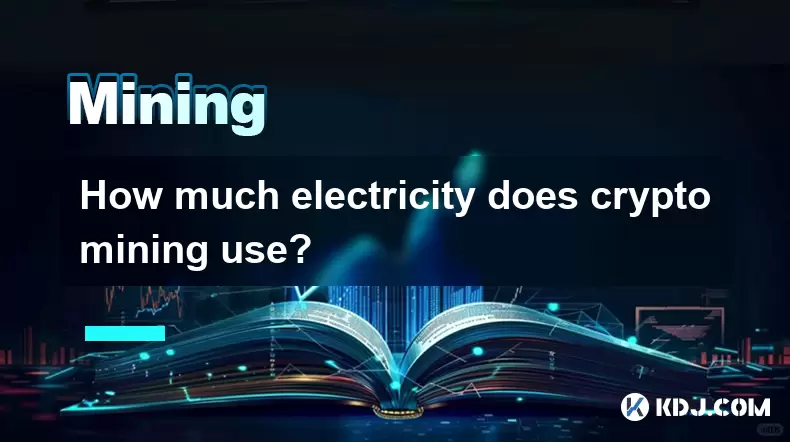-
 Bitcoin
Bitcoin $118,698.3676
0.16% -
 Ethereum
Ethereum $3,428.4877
5.97% -
 XRP
XRP $3.2496
9.52% -
 Tether USDt
Tether USDt $1.0002
0.00% -
 BNB
BNB $725.6930
4.36% -
 Solana
Solana $174.8923
4.52% -
 USDC
USDC $0.9997
-0.02% -
 Dogecoin
Dogecoin $0.2139
6.02% -
 TRON
TRON $0.3155
4.62% -
 Cardano
Cardano $0.8045
7.12% -
 Hyperliquid
Hyperliquid $46.6582
-1.72% -
 Stellar
Stellar $0.4676
0.80% -
 Sui
Sui $4.0143
0.38% -
 Chainlink
Chainlink $17.1546
2.97% -
 Hedera
Hedera $0.2458
3.27% -
 Bitcoin Cash
Bitcoin Cash $496.5967
-0.06% -
 Avalanche
Avalanche $22.8813
3.13% -
 Shiba Inu
Shiba Inu $0.0...01439
3.42% -
 UNUS SED LEO
UNUS SED LEO $8.8389
0.42% -
 Toncoin
Toncoin $3.2113
2.82% -
 Litecoin
Litecoin $101.2646
4.24% -
 Polkadot
Polkadot $4.2262
2.32% -
 Monero
Monero $340.4295
2.92% -
 Pepe
Pepe $0.0...01365
2.92% -
 Uniswap
Uniswap $8.9702
-2.78% -
 Bitget Token
Bitget Token $4.7675
2.00% -
 Dai
Dai $0.9998
-0.02% -
 Ethena USDe
Ethena USDe $1.0003
-0.04% -
 Aave
Aave $324.6394
-2.11% -
 Bittensor
Bittensor $433.6051
-0.88%
How much electricity does crypto mining use?
Crypto mining, especially Bitcoin, consumes vast amounts of electricity—over 120 TWh/year—comparable to entire countries.
Jul 12, 2025 at 06:00 am

Understanding the Energy Consumption of Crypto Mining
Crypto mining involves solving complex mathematical problems to validate transactions and add them to the blockchain. This process requires significant computational power, which in turn demands substantial electricity. The exact amount of energy used varies depending on the cryptocurrency, the mining hardware, and the efficiency of the network. For example, Bitcoin mining is known to consume more electricity than some entire countries due to its Proof of Work (PoW) consensus mechanism.
Bitcoin mining alone consumes approximately 120 terawatt-hours (TWh) per year.
This figure is comparable to the annual electricity usage of countries like Norway or Ukraine. Other cryptocurrencies like Ethereum, Litecoin, and Dogecoin also contribute to global energy consumption, albeit at lower levels than Bitcoin.Factors Influencing Electricity Usage in Mining
Several factors determine how much electricity a mining operation consumes:
- Mining Hardware: Older models like the Antminer S9 are less efficient compared to newer models like the Antminer S19 Pro. The latter can offer better hash rates with relatively lower power consumption.
- Mining Difficulty: As more miners join the network, the difficulty of mining increases, which in turn increases the computational effort required and thus the electricity usage.
- Geographic Location: Some regions offer cheaper electricity, encouraging large-scale mining farms to be set up in areas like China, Kazakhstan, and Russia.
- Cooling and Overhead: Mining rigs generate a lot of heat, so cooling systems are necessary, which also draw additional power.
High-end ASIC miners can consume between 2,000 to 3,500 watts per unit.
When multiplied by hundreds or thousands of units in large mining farms, the total energy usage becomes immense.Comparing Energy Usage Across Cryptocurrencies
Not all cryptocurrencies consume the same amount of energy. Bitcoin is the most energy-intensive due to its massive network and high mining difficulty. Ethereum, which is transitioning to a Proof of Stake (PoS) model, still uses a significant amount of electricity but is expected to reduce its energy consumption drastically once the transition is complete.
- Bitcoin: ~120 TWh/year
- Ethereum: ~70 TWh/year
- Litecoin: ~0.6 TWh/year
- Dogecoin: ~0.3 TWh/year
Ethereum’s energy usage is roughly half of Bitcoin’s, but still exceeds that of many countries.
The difference in energy consumption is primarily due to block time, mining algorithm, and network hash rate.How to Calculate Electricity Usage for Individual Miners
For individual miners, calculating electricity usage involves a few key steps:
- Determine the miner’s power consumption: Check the specifications of your mining hardware. For example, the Antminer S19 Pro uses about 3,250 watts.
- Estimate daily usage: Multiply the power consumption (in kilowatts) by the number of hours the miner runs per day. If the miner runs 24/7, that would be 3.25 kW × 24 hours = 78 kWh per day.
- Calculate monthly usage: Multiply daily usage by the number of days in a month. 78 kWh/day × 30 days = 2,340 kWh per month.
- Determine electricity cost: Multiply monthly usage by the local electricity rate. At $0.10 per kWh, this would result in a monthly cost of $234 just for power.
Miners should also factor in additional costs like cooling, maintenance, and internet connectivity.
These overheads can add 10–20% to the total operational cost.Regional Variations in Energy Consumption and Costs
Electricity prices vary widely across the globe, which directly affects mining profitability and energy consumption patterns. In regions like Venezuela and Iran, where electricity is subsidized, miners can operate at a much lower cost. Conversely, in countries like Germany and Australia, where electricity prices are high, mining becomes less economically viable unless specialized, energy-efficient setups are used.
- Cheap electricity regions: Miners often cluster in places like Kazakhstan, Siberia, and parts of the United States (e.g., Texas).
- High electricity cost regions: Miners may avoid areas like Western Europe and Japan unless they have access to renewable energy sources.
- Renewable energy usage: Some mining farms are now powered by hydroelectric, solar, or wind energy to reduce both costs and environmental impact.
Some mining farms in Canada and Iceland use geothermal and hydroelectric power to minimize carbon footprint.
This trend is growing as environmental concerns become more prominent in the crypto industry.Frequently Asked Questions
Q: Does crypto mining use more electricity than traditional banking?
A: Some studies suggest that Bitcoin mining alone uses more electricity than the entire global banking system. However, these comparisons can be misleading due to differences in scale and function.
Q: Is crypto mining bad for the environment?
A: Mining can be environmentally taxing, especially when powered by fossil fuels. However, an increasing number of miners are shifting to renewable energy sources to mitigate their impact.
Q: Can I mine crypto without using much electricity?
A: Mining with low electricity usage is possible through energy-efficient hardware or by choosing less resource-intensive cryptocurrencies like Chia or newer Proof of Stake coins.
Q: How do electricity costs affect mining profitability?
A: Electricity costs are one of the largest expenses for miners. Even a small increase in cost per kWh can significantly reduce profits or make mining unprofitable altogether.
Disclaimer:info@kdj.com
The information provided is not trading advice. kdj.com does not assume any responsibility for any investments made based on the information provided in this article. Cryptocurrencies are highly volatile and it is highly recommended that you invest with caution after thorough research!
If you believe that the content used on this website infringes your copyright, please contact us immediately (info@kdj.com) and we will delete it promptly.
- C2 Blockchain, DOG Coins, and Acquisition: A Meme-Native Bitcoin Asset
- 2025-07-17 20:30:12
- DeFi Evolution: Hyperion, HYPE Token, and the Hyperliquid Ecosystem
- 2025-07-17 21:30:12
- BlockDAG's NO VESTING PASS: A Crypto Game Changer Amid CRO & ONDO Swings
- 2025-07-17 21:30:12
- Ethereum, Pepe, Crypto: Navigating the Wild West of Digital Assets
- 2025-07-17 20:30:12
- Ethereum ETF Skyrockets: Record-Breaking Inflows Signal Bullish Trend
- 2025-07-17 22:10:12
- SOL, Bounce, Trap: Decoding Crypto's Latest Moves
- 2025-07-17 22:10:12
Related knowledge

How are crypto mining profits taxed?
Jul 14,2025 at 12:28am
Understanding Cryptocurrency Mining and TaxationCryptocurrency mining involves validating transactions on a blockchain network and earning rewards in ...

How to keep a mining rig cool
Jul 12,2025 at 01:42pm
Understanding the Importance of Cooling in Mining RigsCryptocurrency mining is an intensive process that places heavy demand on hardware components, p...

How to mine crypto on a gaming PC
Jul 16,2025 at 12:00pm
What is Crypto Mining on a Gaming PC?Crypto mining involves using your computer's processing power to validate transactions on a blockchain network. A...

How to set up a crypto miner
Jul 16,2025 at 09:14am
Understanding Ethereum Gas Fees: What Are They and How Do They Work?Ethereum gas fees are a fundamental aspect of the network, representing the cost r...

Can you mine crypto on a laptop?
Jul 16,2025 at 02:21am
Is It Feasible to Mine Cryptocurrency on a Laptop?Mining cryptocurrency on a laptop is technically possible, but feasibility depends heavily on the ha...

Is crypto mining worth it?
Jul 16,2025 at 01:21am
Understanding the Basics of Crypto MiningCrypto mining refers to the process of validating transactions on a blockchain network by solving complex mat...

How are crypto mining profits taxed?
Jul 14,2025 at 12:28am
Understanding Cryptocurrency Mining and TaxationCryptocurrency mining involves validating transactions on a blockchain network and earning rewards in ...

How to keep a mining rig cool
Jul 12,2025 at 01:42pm
Understanding the Importance of Cooling in Mining RigsCryptocurrency mining is an intensive process that places heavy demand on hardware components, p...

How to mine crypto on a gaming PC
Jul 16,2025 at 12:00pm
What is Crypto Mining on a Gaming PC?Crypto mining involves using your computer's processing power to validate transactions on a blockchain network. A...

How to set up a crypto miner
Jul 16,2025 at 09:14am
Understanding Ethereum Gas Fees: What Are They and How Do They Work?Ethereum gas fees are a fundamental aspect of the network, representing the cost r...

Can you mine crypto on a laptop?
Jul 16,2025 at 02:21am
Is It Feasible to Mine Cryptocurrency on a Laptop?Mining cryptocurrency on a laptop is technically possible, but feasibility depends heavily on the ha...

Is crypto mining worth it?
Jul 16,2025 at 01:21am
Understanding the Basics of Crypto MiningCrypto mining refers to the process of validating transactions on a blockchain network by solving complex mat...
See all articles

























































































